Mammal Facts
 Armadillo ArmadilloThe term “armadillo” in Spanish means “little armored one.” |  Badger BadgerThe badger digs faster than any other animal in the world. |
 Bat BatThere are about 1,000 different types of bats. |  Bear BearIn the wild, bears can live as long as 30 years. |
 Bobcat BobcatBobcats are mainly carnivores and survive by hunting and eating rabbits, birds, bats, rodents and deer. |  Camel CamelThere are basically two types of camels – the one-humped camel (Dromedary Camel) and the two-humped camel (Bactrian Camel). |
 Cheetah CheetahThe cheetah, which can run as fast as 70 miles per hour, is the fastest land mammal on the planet. | 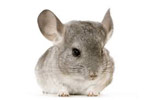 Chinchilla ChinchillaThe chinchilla is a nocturnal mammal, meaning that it likes to stay up at nighttime and sleep during the daytime. |
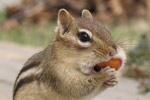 Chipmunk ChipmunkThe most common species of chipmunk found in the United States is the Tamias striatus. |  Deer DeerMale deer are usually called bucks or stags. |
 Dolphin DolphinWhen a dolphin sleeps, half of its brain stays awake. |  Ferret FerretA female ferret is called either a jill or a sprite. |
 Fox FoxFoxes have a very keen sense of hearing. |  Gorilla GorillaA fully grown adult male gorilla can stand more than 6 feet tall. |
 Hedgehog HedgehogYoung hedgehogs are referred to as pups or hoglets. | 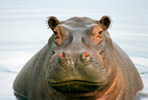 Hippopotamus HippopotamusOther than the elephant and the rhinoceros, the hippopotamus is the largest animal on earth. |
 Horse HorseThe weight of an adult horse’s brain is about 22 ounces. |  Hyena HyenaThere are four hyena species: the Striped hyena, Brown hyena, Spotted hyena and the Aardwolf. |
 Kangaroo KangarooThere are four main species of kangaroo with several subspecies that exist in the world today. |  Leopard LeopardThere are an estimated 50,000 leopards living in the world today. |
 Lion LionThe lion’s diet consists of a variety of animals. |  Meerkat MeerkatMeerkats often engage in group activities, including wrestling matches and foot races. |
 Orangutan OrangutanContrary to popular belief, orangutans are great apes, not monkeys. | 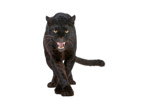 Panther PantherMale panthers are simply referred to as “panthers.” |
 Pig PigBaby pigs are called piglets. |  Platypus PlatypusThe original platypus specimen is held at the London Museum of Natural History. |
 Polar Bear Polar BearThe fur on polar bears is actually translucent. |  Rabbit RabbitThe most prominent feature of a rabbit is their ears, which generally measure about 4 inches in length. |
 Raccoon RaccoonA raccoon’s tail can be as much as 52% of their total body length. |  Sloth SlothAlthough sloths do not have much muscle mass, they can hang from trees with their claws. |
 Squirrel SquirrelThere are believed to be about 280 different squirrel species in the world today. |  Tiger TigerTigers can weigh as much as 720 pounds and be as long as 6 feet with a 3-foot tail. |
 Whale WhaleThe bowhead whale can live to be 200 years old. | 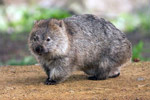 Wombat WombatWombats are native to Tasmania and Australia and they are only found in these two places today. |
